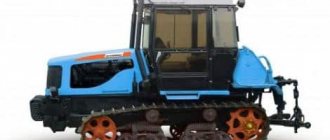Home page » Buses » Manufacturers » GAS
GAZ 22171-750. Photo GAZ
There are a large number of enterprises in the passenger transport production market. A well-known brand is GAZ. The Gorky Automobile Plant was founded in 1932. From 2005 to the present day, the company has been part of the large automobile manufacturing holding GAZ Group . The Gorky Automobile Plant, located in Nizhny Novgorod, is the leading enterprise of two of the five divisions into which the Group's structure is divided: Light Commercial and Passenger Vehicles and Automotive Components. This article is devoted to the commercial equipment produced by the plant and its characteristics.
GAZ group of companies, Russian buses division: where they are produced, history and more
The history of the plant began in 1939 with the signing of an agreement with the American company Ford Motor Company for assistance in organizing and establishing the production of cars and trucks. The Nizhny Novgorod Automobile Plant (NAZ) began work in January 1932 , at the same time the production of the 1.5-ton NAZ-AA truck (from next year - GAZ-AA) and the GAZ-A open-body passenger car began.
The first cars were manufactured according to the drawings of an American company, but had some differences. Thus, combining foreign solutions with their own developments, the designers created a whole family of models based on the GAZ-AA, including the popular GAZ-03-30 bus.
The company continued to receive technical support from Ford until 1935. During the Great Patriotic War, the enterprise was reoriented to produce military equipment. At the end of the war, work was carried out to replace the entire model range. In the period from 1945 to 1960, many well-known models of equipment rolled off assembly lines .
In the 1960s, the renovation of a number of trucks was completed, on the basis of which models of passenger transport were assembled, in the 70s, production was reorganized, and in the 80s, a plant for the production of diesel engines was built. Despite the crisis in the 90s, the company continues to operate , producing the GAZ-32213, later the Sobol family of vehicles, and the GAZ-3308 Sadko rotation bus. The 90s were also marked by cooperation with several foreign enterprises and the transformation of the plant into a joint stock company.
In 2000, a controlling stake in the GAZ company was acquired. In 2001, GAZ became part of the RusPromAvto holding , which, as a result of restructuring in 2005, was transformed into the GAZ Group, in which the leading role was assigned to the company from Nizhny Novgorod. At the end of the 2000s, a reorganization was carried out, as a result of which it was possible to reduce the unprofitability of the enterprise and demonstrate operational efficiency. The main attention was paid to the development of the production of light commercial vehicles. Demand caused an increase in production volumes of GAZ-3307, 09 and 08 “Sadko” trucks, on the basis of which off-road buses were created.
Shift bus GAZ-3309. Photo GAZ
Despite the crisis of 2008-10, at the turn of the decade, serial production of Gazelle-Business and Gazelle-Sobol cars began. In 2013, serial production of Gazelle NEXT began. Now the plant continues to operate; current offers can be found on the company’s website.
Brands: PAZ, LiAZ and so on
The Gorky Bus Plant offers a fairly extensive list of equipment under several names: GAZ, GAZon, GAZelle, Sadko. At the same time, the parent company unites more than 10 enterprises, which are divided into divisions: “Light commercial and passenger vehicles”, “Power units”, “Automotive components”, as well as “Buses”, which includes the following enterprises:
- Pavlovsk Bus Plant, which produces small and medium-sized vehicles for urban, suburban, and intercity routes. Distinctive features of the PAZ brand : affordable cost, excellent maneuverability, practical interior design, good technical characteristics.
Bus Vector NEXT 8.8 intercity. Photo GAZ
- Kurgan Bus Plant, which produces middle-class models for general and special purposes, which are distinguished by a reliable engine and transmission, thoughtful layout and interior design, and high-quality electrical equipment.
- Likino Bus Plant, which offers medium, large and special large class vehicles for covering short and long distances. LiAZ equipment has been repeatedly awarded at exhibitions and fairs, which speaks of its quality and reliability.
Predecessors
In January 1932, a huge car production machine called the Nizhny Novgorod Automobile Plant was launched. The car plant, long-awaited by motorists, was supposed to produce a basic one-and-a-half-ton car and a passenger phaeton in the first years. Then they planned to gradually introduce three more new models into the production program: a pickup truck and a sedan based on a passenger car, and a closed van based on a semi-truck. It was for these types of cars that patents were purchased from Ford. The bus was not considered for production as a production unit during the construction of the automobile plant in Nizhny. The main reason for this is the lack of a powerful body shop at the plant, as well as the unsatisfactory suitability of the one and a half ton chassis - the short wheelbase of the car did not allow placing a sufficient number of people on the bus. For urban and intercity transportation, the GAZ-AA chassis (3.3 m base) was not suitable at all. The Soviet Union did not purchase a license for longer wheelbase bus chassis from Ford, and it was on this that body companies in the USA built 99% of all AA model buses. Ford Motor did not produce buses at its factories; the Union City company from Indiana specialized in this. In 1934, GAZ buses will be surprisingly similar to the main Type 330A model of this company.
Despite the unfavorable conditions, the plant still decided to experiment with buses. On November 2, 1932, the first machine was ready in the experimental workshop. According to the designers, the design was based on a Ford-AA school bus. The first-born, called GAZ-1, turned out to be very angular and bulky. Its body looked more like a product of the body shop of the automobile plant named after. I.V. Stalin. The car looked primitive, even by the standards of Soviet coachbuilding: low interior height, heavy roll-down windows, lack of ventilation, etc. The bus had three doors: side doors, for the driver and passengers, and a rear one in case of emergency evacuation. This door arrangement will remain on all subsequent GAZ-3 buses. This bus transported gas workers for several years. At the beginning of 1933, two more experimental buses with different bodies were produced - GAZ-2 and GAZ-3. The second sample was made as long as possible; the roof was raked to reduce vibration and visually reduce the height of the bus. The engineers were able to lower the line of windows due to the fact that the roof of this sample had a deep convex shape, sloping on all sides. The cabin height reached 177 cm, which was the standard height for a man at that time. Such a roof seemed to hide the height, creating the illusion of an elongated body. According to the fashion of that time, the rear window was made oval. The designers managed to apply a smooth transition from the dashboard to the body, but the second row of windows, above the driver's window, remained. On the third copy, this problem was also solved. Thanks to the correction of dimensions, the new car was able to accommodate 18 passengers by simplifying the seat designs. The bus was equipped with rear buffers. The shape of the new body was as close as possible to the Ford 330, and in the end it was this that was adopted into the series. One of the experimental vehicles was turned into a printing press bus, equipped with typewriters, radios, telephones and typesetting cash desks. The bus was solemnly handed over to the Pravda newspaper.
Advantages and disadvantages, reviews
The plant offers a wide range of equipment to solve various problems for private and commercial clients. Machines are a profitable solution for business. A variety of modifications and characteristics allows you to choose a car with optimal parameters. The owners note the positive dynamics, the constant work of the manufacturer and the designers of the enterprise on the comfort and quality of the equipment.
Bus GAZelle City. Photo GAZ
Modern models have the ability to successfully compete with imported analogues. And the affordable price ensures increased demand. Constant modernization of models/modifications demonstrates the plant's customer focus. Owners note the following advantages of individual GAZ models:
- convenience;
- dynamism;
- spacious interior;
- elastic suspension;
- good sound insulation;
- good visibility for the driver;
- comfortable temperature in the cabin at any time of the year;
- excellent electronics performance;
- controllability;
- modern appearance;
- economy;
- low cost of spare parts;
- Timely maintenance guarantees reliability and long service life.
As disadvantages, the owners note: frequent breakdowns of individual elements and mechanisms, narrow doors, low ceilings, high accident rates, low engine power, dim lighting, poor heating, uncomfortable driver's seat, poor shape of the backrest. However, it is worth noting that the disadvantages are inherent in models and modifications of previous years.
KAvZ-4270 CNG
Journalists were hunting for this car, which was driving around the track, with cameras: few people had seen it yet, since in eight months of this year, according to Autostat, only eight copies were sold.
There is a step at the entrance, but the door is wide
KAvZ-4270 CNG is easy to distinguish by the hump with the inscription “methane” on the roof
1 / 2
Kurgan residents have prepared a compact gas bus for the regions: length - 10.2 m, at the entrance there is a step (and the interior in the rear is raised), on the roof - cylinders with compressed methane, in the rear - a Cummins engine, gearbox - the same Allison "automatic" , bridges are Dana brands.
On the right side of the panel is the Allison automatic control panel and the video system screen
Everything is fine in the cabin - but it is not isolated from the entrance and the steering wheel is not adjustable
1 / 2
Of course, from the design of the interior (which smells of plastic) and the cabin, it is clear that the Kurgan plant does not live well: the interior is simpler than that of LiAZ, with partitions “like wood” and flanging the floor with aluminum corners. The driver is separated from the entrance only by that same partition, and the steering wheel is not adjustable at all, which makes the microclimate and ergonomics far from ideal.
The interior of the KAvZ is quite simple, but spacious.
But the panel is made better than that of the Cursor (gear shifting is done with buttons, and a video system monitor is built in nearby), and the car is controlled surprisingly well - the steering wheel is even slightly tight. However, the engine can be heard very well here even from the cabin, and you also have to be careful when turning: the cylinders on the roof make the car tilt like a yacht.
In addition to the cylinders on the roof, there is another one in the stern - in reserve
Engine - Cummins 6.7 CNG, but next year it will be replaced with YaMZ-534 CNG
1 / 2
With regard to efficiency, not everything is clear yet: in the catalog it is printed that 665 liters of gas should be enough for 475 km, but in the presentation shown, the reserve is 662 liters and it will be enough for 350 km (apparently, the latter figures are closer to the truth). In any case, the factory workers assure that the car will be profitable, also because it falls under the state subsidy program for gas engine equipment. If the initial price is as much as 7 million 340 thousand rubles, then after deducting the subsidy, 4 million 540 thousand remains. The main thing is that there is a methane gas station next to the park!
Specifications
The following presents the technical characteristics of GAZ buses that are of the greatest interest and demonstrates the average values of each parameter. For reference, it should be noted that the properties of some models, especially for cars of previous years, produced in the first half of the 20th century, are not possible to indicate.
How much does it weigh
Curb and technically permissible/gross weight (or weight) are the main technical characteristics. For GAZ rotation buses, these values average 4000 and 6000 kg. The popular GAZ-33088 has parameters equal to 3990 and 6350 kg. The mass of vehicles of especially small and small capacity classes for general purpose is 5000 and 8000.
Rotational bus GAZ-33088 Sadko. Photo GAZ
Low and high deck
The location of the floor relative to the road surface demonstrates the ability to overcome obstacles and the level of maneuverability. Shift buses, assembled on the basis of trucks, are distinguished by a high interior floor position and the maneuverability of the equipment. Buses produced before the 1990s were also of the high-deck type.
At the time when the company was just starting its activities, there was no clear classification of passenger transport. Early GAZ models, for example GAZ-03-30, were operated in various conditions and to solve a wide range of tasks. We should not forget about the not very high quality of the roads of that time.
The floor level of models produced since the 1990s depends on the purpose of the machine. A significant part of the models are designed to serve urban routes, so they have a low-floor layout.
Consumption of gas and other types of fuel, consumption rates
At different times, the model line of the Gorky Plant included models running on gasoline, diesel fuel, and two types of fuel. Early GAZ models ran on gasoline; they were no different in terms of efficiency, but it is difficult to provide specific data.
Bus Vector NEXT 7.6 meters modification Accessible environment. Photo GAZ
Popular models of recent years, equipped with diesel and bi-fuel engines, consume fuel in small quantities . The GAZ Vector is also economical, its engine consumes 20 liters of fuel per 100 km. The average for all models is about 15 liters. Fuel consumption rates are calculated using a special method; owners also have the opportunity to independently calculate the indicator in accordance with the formula.
Interior arrangement
The design of the interior of GAZ vehicles has always been distinguished by its brevity and practicality . Depending on the purpose of the model, the layout of the machines differs. Urban models are equipped with a small number of seats with handrails, storage areas and wide aisles.
School Bus Vector NEXT. Photo GAZ
Cars designed to cover medium and long distances are equipped with comfortable seats with seat belts, narrow aisles, luggage compartments and shelves. GAZ school buses meet absolutely all requirements for transport for transporting children.
Engines, Euro-5 and others
At various times, GAZ cars were equipped with gasoline, carburetor, diesel and dual-fuel units of the YaMZ, MMZ, UMZ, Evotech, Cummins brands. Models of recent years are equipped with units in which four cylinders are arranged in a row.
Utility bus GAZ-27057. Photo GAZ
The working volume of power units does not exceed 5 liters. The average power is 150 hp, and the maximum torque is 300 Nm/min. The engines of modern cars comply with the Euro-5 environmental standard.
How many seats
The compact dimensions of the buses determine the small capacity of the cabin, which is equipped with an average of 15-20 seats. While the total capacity of the cars is 40 passengers.
Extra small class bus GAZ 322132. Photo: UralSpetsTrans
The low ceiling height of most GAZ models does not allow for the carriage of standing passengers. Comfortable conditions are created by the machines of the Vector/Vector NEXT line; they are distinguished by high ceilings, almost two meters - 1.95.
Dissenting opinion: Yuri Petrov, chief editor of the magazine “Truck Press”
On a slope of 8–9%, we decided to test ABS. Lunch time. The route is a suburban snowy slope, humidity (φ) 85%, outside temperature –19 °C. Two lane suburb. Braking a 3.6-ton bus from a speed of 50 km/h while professionally driving a regular bus on a route with passengers is already an emergency.
And so - stop the car!
The ABS only worked when the pressure on the pedal was increased. Gently, with unobtrusive jolts, the car went downhill for 15–20 meters. It feels like the bus just hit a snag. The bus does not become hysterical in a paroxysm in a premature struggle with the wheels locking, and does not suffer from slow-wittedness. Braking went smoothly, without incidents, without requiring correction of the trajectory by the steering wheel, maintaining the trajectory and a safe lateral interval.
The coolness of the interior with the door leaves open was measured several times. With the stove fully operational (external conditions φ = 85%, t –16 °C), cooling the cabin air from the internal temperature of +21.9 °C to +10 and +5 °C took 8 and 12 minutes, respectively (on the left seat behind the storage platform). With the engine and heater turned off, it took 20 minutes for the open interior to cool down to a temperature of -15 °C!
Where to buy new and used models, heads and sale of other spare parts
It is possible to purchase GAZ buses directly from the manufacturer and from employees of supplier companies. In addition to selling equipment, enterprises also offer maintenance/repair services, sales of spare parts and components. The companies presented in the relevant sections offer popular ]rental[/anchor], leasing and refurbishment services.
All-terrain buses, Small class buses, Cabover buses, Shift buses, High-floor buses, GAZ, City buses, Rear-engine, ZIL, Hooded buses, Intercity buses, Single buses, Platform, Suburban buses, Articulated buses, Special buses, Medium buses, School buses
ZIL buses: model range
Soviet industry was represented by a large number of large factories and manufacturing enterprises. Unfortunately, not everyone continues to work; for various reasons, companies ceased operations. One of these enterprises includes the Likhachev plant, whose popular bus models are presented in this article. About the manufacturer, models in chronological order The plant was founded in 1916, at different times the company bore several names, hence the differences in the markings of equipment models. First bus…
- Further -
All-terrain buses, Shift buses, High-floor buses, GAZ, Utility buses, Single buses, Special buses
GAZ rotation buses
The Gorky Automobile Plant, part of the largest Russian automobile manufacturing holding GAZ Group since 2005, produces a wide selection of equipment for various purposes. The model line also includes buses. This article is devoted to the presentation of popular models of GAZ rotation buses. GAZ-3308 GAZ-3308 “Sadko” is a Russian cargo flatbed all-wheel drive vehicle of the 2.5-ton class with a bonnet design, produced from 1997 to 2022. The following shift vehicles were produced on the Sadko chassis: KAvZ-39766 - an all-terrain bus with...
- Further -
Small class buses, High floor buses, GAZ, City buses, Intercity buses, Low floor buses, Single buses, Front engine buses, Suburban buses, Special buses, School buses
Special buses
PAZ-32053 and KAVZ-4238 absolutely comply with GOST “Buses for transporting children. Technical requirements". All seats have seat belts, luggage racks for briefcases and an additional step at the entrance to the bus for the convenience of schoolchildren.
The scope of application of PAZ-32053-20 is cargo transportation. This GAZ bus can carry up to 10-11 people and 1800 kg of cargo at the same time. Used for transporting construction and seasonal agricultural crews and shift workers.
PAZ-32053-80 “Ritual services” - equipped with all the necessary equipment and layout for a funeral procession.
GAS Vector NEXT
Vector NEXT - a family of buses produced by the GAZ Group includes several modifications that differ primarily in their purpose and body length. History of the PAZ Vector Next In early autumn 2015, at the Russian exhibition of commercial vehicles COMTRANS, which takes place in the capital's Crocus Expo complex, the new GAZ Vector NEXT bus was presented. The model is designed to replace the familiar grooves on the country's roads - although popular, they are already obsolete. Compared to them, the new product, aimed at…
- Further -
GAZ, City buses, Brands and models of tourist buses, Single buses, Extra small buses, Tourist buses, Excursion buses
Look back
The history of frame vans on the GAZELLE NEXT chassis began in 2014. Then the family was called Cityline. The construction principle is a frame van with elements made of pipes and closed-section profiles, covered with composite panels. The most interesting thing is that the head man himself undertook to produce these cars, and not third-party bodybuilders. The quality of the passenger bodies turned out to be quite good, and in comparison with the all-metal version of vans and buses, which appeared later, the high ceiling and slightly “inflated” silhouette of the “framework” became a significant advantage in the field of urban route transportation. If you go to a bus stop today and stupidly wait for a minibus, then with a high degree of probability you will not be able to ride on the all-metal version, but on the frame version - as much as you like! Recognition of the model by the operator, which may be more significant.
All-metal vans and minibuses GAZELLE NEXT are also in good demand, but if we talk about a passenger car, the CMF is more common among service and custom buses.
In 2022, the plant will present the modernized GAZELLE NN family with an updated design and a deeply modernized chassis. In the same year, mass production of the heavy version “GAZelle NEXT 4.6” begins, with a gross weight of 4.6 tons. The new bus - the subject of our today’s test belongs to class “A”, which provides for the transportation of standing passengers, category M2, with a gross weight of up to 5 tons and up to 7.5 m long. Structurally, this is a complex symbiosis of the basic GAZELLE NEXT with design motifs of the GAZELLE NN and some chassis solutions migrated from the GAZELLE NEXT 4.6.
GAZ 322132
The GAZ 322132 model is a modification of the famous small-sized GAZelle car. The appearance of the minibus is easily recognizable: in many settlements in Russia and the post-Soviet space, this car is used as public transport. The comfortable technical characteristics of the GAZ 322132 have made the car one of the most popular in the field of passenger transportation. History of creation GAZ 322132, like other cars in the line, was produced at the Gorky Automobile Plant, first tested in 1994...
- Further -
Shift buses, GAZ, Single buses, Special buses
Our information about GAZelle City in some figures
The starting price of a minibus is from RUB 2,778,200.
The official manufacturer's warranty for the new GAZelle-CITY car is 36 months without mileage limitation!
Maintenance must be carried out every 20,000 km or once a year.
Passenger capacity is 22 people , with 17 people traveling sitting.
The overall length is 6.62 m , the ceiling height in the cabin is 2.1 m , the minimum ground clearance is 145 mm - the car is completely urban.
The minimum turning radius along the track of the outer front wheel is 6.9 m . Front overhang – 25º , rear overhang – 11º .
LAWN NEXT
The rear-wheel drive GAZon NEXT vehicle is equipped with a two-seater cabin and a watch van. Vehicles used to deliver repair, construction, geological exploration and other teams to the site. Moreover, the “object” here should be understood in the broadest sense; it can be an accident site, a construction site, or oil and gas fields remote from populated areas. Unlike others in this type of van, the transportation of people is not only allowed, but is also the essence of its name - “rotation bus”. Description and...
- Further -
Small buses, GAZ, Low-floor buses, Single buses, Extra small buses, Special buses, School buses
A little about the design of the passenger body
The bus body frame is welded from standard rectangular steel pipes. The welded body is subjected to electrochemical priming in a cataphoresis bath. The thickness of the protective coating is about 20 microns. As a result of the use of cataphoresis, the corrosion resistance of steel parts increases fourfold. External fiberglass panels are installed with polyurethane glue, after which the body is painted with low-temperature drying enamels. Almost all fastenings of external plastic elements to the frame are made using glue, and mechanical connections are used to a minimum, since they transfer forces arising from bending loads to the plastic. The adhesive connection does not transfer the load, in this case, the twisting of the frame when driving over uneven surfaces and cornering does not have such a noticeable effect on the durability of the outer skin. To facilitate repair work, the rear corner panels and rear bumper panel are not glued, but are installed using metric fasteners.
Before installing interior parts, the body is covered with thermal and noise-insulating material, hidden cavities are filled with acoustic foam.
GAZ buses for transporting children
School buses must meet a wide range of requirements and are equipped with a wide range of equipment and options. Popular models produced by the Gorky Automobile Plant are presented below. GAZelle Next, GAZelle NEXT model range is a family of Russian light-duty vehicles, serial production of which began at the Gorky Automobile Plant on April 9, 2013. The NEXT range includes flatbed vehicles, all-metal and vans, electric vehicles, ambulances, and buses, in…
- Further -
Small buses, High-floor buses, GAZ, Single buses, Special buses
Serial bus
For serial production of buses, it was decided to use the former First Automobile Assembly Plant, which was a training branch of GAZ. The first ten buses left the gates of the bus workshop in July 1933. By the end of the year, another 203 units were assembled, gradually increasing production to 15 buses per month. In the fall of the same year, a sample of a large 25-seater GAZ-5 bus on a three-axle chassis (the third axle is movable) was completed. Compared to the GAZ-3, the body of the new bus was two sections larger. This made it possible to accommodate 25 seats. This bus was supposed to demonstrate a step forward and even change the two-axle design, but it turned out to be too unstable. GAZ will later return to the three-axle bus model, but it will be a vehicle for a completely different purpose. They are worth writing about separately.
GAZ-3 went into production with a 16-seater seat arrangement (not counting the driver's). The bus was supposed to carry only seated passengers, so its use as a route city transport was not considered. In reality it was different. Remember minibuses, until recently in which passengers stood bent over... There was only one door for boarding passengers, the second passenger door was a priori excluded in favor of the already scarce space for seating, and besides, the only door for passengers excluded the presence of a conductor. For comparison: the formal predecessor of the GAZ-3, the AMO F-15 bus, which was produced until 1931 (also on a one and a half ton chassis), could accommodate only 13 seats.
In comparison with the standard GAZ-AA chassis, no design changes were made to the bus model. The only difference is the absence of a towing device on the bus chassis. The springs were the same as on the truck chassis: the front spring was transverse, semi-elliptical; the two rear ones are cantilever. Passengers on bad roads did not feel very comfortable due to the stiff suspension. The bus had a fuel consumption of 18–20.5 l/100 km and a top speed of 65 km/h. All other indicators corresponded to the base GAZ-AA car.
A detailed description of the GAZ-3 body of the 1940 model from GOST-55-40 has been preserved. The body had a common wooden frame connected to a metal front end. The side panels of the body were sheathed with metal sheets. The bus had two side doors - one for passengers, the other for the driver - and a rear double door without a central pillar, closed with latches. The door for passengers did not have a handle; it could only be opened by the driver using a special lever device. Three of the four side windows, including the door windows, were equipped with power windows, and one was tightly closed. One of the two rear door windows could be lowered down, but on models starting in 1947, both windows were already tightly closed. The wind window could be raised as it was mounted on special hinges.
The seating arrangement was as follows: three rows of double seats with spring cushions and semi-soft backrests and two double seats for four in the last rear row. The pillows and backrests are upholstered in leatherette. The windshield is “triplex” - safety double-layer, the side windows in the cabin are standard “furco” type. Both had a thickness of 4.5 mm. Ventilation of the body was carried out using two fans in the upper part of the front wall of the body, equipped with control flaps, as well as opening windows.
The floor of the body was covered with a black rubber mat. The interior was trimmed with leatherette glued to plywood. At the rear of the body there was a folding step, which in the raised position was part of the side; a spare wheel was located inside the step. Buses of the 1933–1934 model had short rear buffers on each side of the body. Then they were abandoned. At first, the car was equipped with tires of size 6.00×20 (32×6.00), and from the late 30s with a larger size of 6.5×20.
GAZ-03-30
GAZ-03-30 is a Soviet small-class bus on the chassis of GAZ-AA and GAZ-MM trucks. In the USSR, such buses were called service buses; vehicles that were not planned to be used as urban passenger transport fell into this category. The main consumers were enterprises and organizations. They needed transport to transport their workers and employees. But GAZ-03-30 also served airports, train stations, sanatoriums, and served as a tour bus. Predecessors: GAZ-3, 25 seats and others In January 1932, the Nizhny Novgorod...
- Further -
Buses, All-terrain buses, Small class buses, AZ URAL, Cabover buses, Large buses, Shift workers, VOLZHANIN, High-floor buses, GAZ, GOLAZ, City buses, Utility buses, Rear-engine, ZIL, KAVZ, Bonnet buses, LIAZ, Intercity buses, NEFAZ , Low-floor buses, Single buses, Extra-large buses, Extra-small buses, PAZ, Front-engine buses, One-and-a-half-decker buses, Suburban buses, Ritual buses, Articulated buses, Special buses, Medium buses, ST NIZHEGORODETS, Tourist buses, UAZ, Central-engine, School buses , Excursion buses
Travel models
These are “Cruise”, “Voyage”, “Vector-intercity”, “LiAZ-international”, KAVZ-4238. It is worth dwelling in more detail on the “Cruise” - a bus that fully complies with the entire set of international UNECE requirements for vehicles of this category. The Scania chassis, electronic suspension that raises and lowers the body, as well as enhanced thermal insulation for the northern versions, place this GAZ (bus) at a high position in the world market.
Buses of Russia
Companies specializing in the production of buses are located in many countries. Enterprises from individual countries are of increased interest to Internet users and potential clients, including France, Spain, Italy, Poland, Hungary, Germany, the USA, England, Sweden, the Republic of Belarus, China and many others. Manufacturing organizations from Russia are no exception. Advantages and disadvantages of Russian production Russian-made buses are an affordable solution for many…
- Further -
Small class buses, GAZ, City buses, Single buses, Extra small buses, Ritual buses, Special buses, School buses
GAZelle Business
The GAZelle Business bus (depending on the modification) is a comfortable and compact car with excellent characteristics and low cost. The model is adapted to difficult Russian conditions, which is an additional advantage. The basic version is based on a high-strength frame chassis. History of creation Design work began in 2008. Based on statistics on warranty repairs and sales of spare parts, as well as surveys of dealers, 20 units were modified, and 130 changes were made to the design. Available...
- Further -
Small buses, High-floor buses, GAZ, City buses, Brands and models of tourist buses, Intercity buses, Low-floor buses, Single buses, Suburban buses, Ritual buses, Special buses, Tourist buses, School buses
External image
“GAZelle CITY” compared to its predecessor “Cityline” is perceived much more harmoniously. An increased glass area with complex shaped window sill lines, a noble slope of the A-pillars for the sake of aerodynamics, LED head optics, and an electronic route indicator in a separate sector. The body has become slightly longer than that of the Cityline, and the wide double-leaf automatic door is now close to the ground. But the most important thing is that this is an honest low-floor bus GAZELLE CITY - the only one in the segment today.
GAZelle NEXT
GAZelle NEXT is a family of Russian light-duty vehicles, serial production of which began at the Gorky Automobile Plant on April 9, 2013. The model (factory index A21RXX) differs from the previous new cabin of the NEXT generation with an ergonomic dashboard, airbags, electric windows and a number of innovations, as well as an extended wheelbase, a proprietary gearbox with joystick shifting, a new suspension (independent at the front) , new brakes and rack and pinion steering...
- Further -
All-terrain buses, Small class buses, Cabover buses, Large buses, Shift buses, High-floor buses, GAZ, City buses, Utility buses, Rear-engine, KAVZ, Bonnet-type buses, LIAZ, Brands and models of tourist buses, Intercity buses, Low-floor buses, Single buses, Extra large buses, Extra small buses, PAZ, Front engine buses, Suburban buses, Articulated buses, Special buses, Medium buses, Tourist buses, School buses
Modernization
In 1935, the bus workshop created prototypes of the GAZ-13 and GAZ-13V buses. It was planned that some of the new, more streamlined and comfortable buses, if not replaced, would at least be produced in parallel with the GAZ-3. The buses differed not only in body shape. In the GAZ-13, the number of seats was reduced to 13 (as on the AMO F-15), the abandonment of the fourth row gave more space in the cabin. The seats have turned into comfortable chairs with soft backs. The car glittered with a chrome-plated, streamlined casing on the radiator. The body itself has become wider and lower. The design of the second bus, GAZ-13V, was even more bold and sophisticated. As a result, either the small capacity scared me away, or the high price of such buses, or perhaps the excessively, I would say, un-Soviet, expensive design - now it is not possible to say for sure. GAZ-13 remained prototypes.
In the same year, they decided to make a small, as they say now, restyling of the body for the GAZ-3. A multifunctional panel was installed above the front of the cabin. Its purpose included protection from rain, lighting, and interior ventilation. A sign indicating the routes was inserted into the panel. As a rule, the name of the plant or organization to which the bus belonged was indicated.
In 1937, the bus was shortened by 15 cm, and the following year, 1938, most likely due to a government directive on the unification of buses in wartime, the rear part of the body was completely redesigned. Now, instead of one door at the back of the bus, there is a double door. The rear doorway is twice as wide. In wartime, such buses were easily converted into ambulances, in which the seats gave way to two perpendicular benches or six places for stretchers. The wide rear opening ensured comfortable loading of the wounded. Back in 1937, a specialized ambulance bus GAZ-03-32 was built, but the work at the car plant did not move beyond experiments. However, during the Great Patriotic War, many ordinary GAZ-03-30 buses were converted for army hospitals, where they actively served.
By the way, the 03-30 index itself appeared no earlier than 1937. Before this, the bus was called either GAZ-3 or “GAZ-AA bus.” It is possible that early body versions had other indices (for example, -10, -20). The first digit of the index - zero - indicates the chassis, the second - the body. The car plant introduced this practice to designate its models according to the “Ford” principle.
In 1940, the bus was equipped, like all automobile products of the plant, with a new GAZ-MM engine (50 hp), the same changes were made to the chassis design that the basic semi-truck had undergone in those years: a new steering wheel, clutch, gearbox, etc. d.
With the beginning of the Great Patriotic War, the production of GAZ-3 buses came to an end. All the forces of the bus branch were devoted to the manufacture of military products and to the maximum production of M-55 (GAZ-55) ambulances. From 1942 to 1944, only 28 buses were produced, and all of them were used for factory needs. Since 1945, serial production of buses has been resumed. A distinctive feature of the new GAZ-03-30 was the presence of simplified L-shaped front wings. In the same year, development began on a new model on the GAZ-51 chassis under the symbol GAZ-71.
GAZ-3 was painted with special bus glyptal and paint oil paints. The bus had two factory paint schemes. First: dark bottom - light window belt - dark roof. The second option involved painting the roof the same color as the window belt or another light tone. As for the main color, it is reliably known that blue, dark blue, dark green and gray are used. The window belt was painted in brilliant yellow and white colors. Light colors were also used: cream, beige, etc. During the Great Patriotic War, buses were repainted khaki; after the war, old buses were repainted in all sorts of colors, but the predominant color was still blue. Until 1945, buses intended for fire protection were painted bright red. Buses of early production 1933–1934 had different color schemes and colors (for example, dark up - light down). The first buses also had a molding belt, which was painted in a separate color.
By order of the Ministry of Automotive Industry, the GAZ bus branch was separated from the plant in 1946 and turned into an independent enterprise - the Gorky Bus Plant.
The country's first bus plant received the GZA trademark so as not to be confused with the GAZ automobile plant. Characteristics of GAZ buses
| GAZ-1 | GAZ-2 | GAZ-3 | GAZ-3 | GAZ-13 | GAZ-03-30 | GAZ-03-30 | |
| Start of release | 1932 | 1933 | 1933 | 1935 | 1935 | 1937 | 1939 |
| Seating places, pcs.* | 16 | 18 | 16 | 13 | 16 | ||
| Base, mm | 3340 | ||||||
| dimensions | |||||||
| Length, mm | 5565 | 5900 | 5680 | 5400 | 5480 | 5250 | 5300 |
| Width, mm | 2032 | 2070 | 2032 | 2030 | 2060 | 2105 | 2100 |
| Height, mm | 2328 | 2500 | 2392 | 2380 | 2216 | 2500 | 2530 |
| Cabin height, mm | 1612 | 1770 | 1676 | 3570 | 1512 | n. d. | 1675 |
| Body length, mm | 3665 | 3950 | 3820 | n. d. | 4065 | 3405 | 3455 |
| Number of side windows, pcs. | 10 | 8 | 10 | ||||
*Excluding driver's seat.
Despite the relatively low price (13,863 rubles in 1937–1938), the process of building a bus body took a lot of time and was very labor-intensive. The complex frame was made of wood and had many small wooden parts, which made the work more difficult. GAZ-03-30 had 508 different wooden elements! Such bodies were short-lived - they quickly rotted and wore out. Buses that survived until the mid-fifties had mostly new bodies on their shoulders. The same four copies that have survived to this day barely preserved part of the cladding, which was used to restore the frame; all wooden elements were destroyed by time. Two buses have been preserved in St. Petersburg, one in Riga (all with bodies model 1938), and one, with a well restored body, appeared in 2011 in Moscow (model 1937).
In addition to the Gorky Automobile Plant, there were a lot of enterprises: auto repair, mechanical, body factories, bus depots, factory workshops, which for their own needs or in small series for their region produced similar service buses on the GAZ-AA/MM chassis with a body code-named “box”. The largest manufacturer turned out to be ATUL body shops in Leningrad. They produced in 1937–1944. almost an exact copy of the GAZ bus, but with fewer windows.
GAZ buses: model range
There are several domestic brands on the Russian market, under which an extensive list of buses is produced: PAZ, KAvZ, LiAZ. The leading brand is GAZ. This review is devoted to the analysis of popular models of equipment and directly to the manufacturer of vehicles for passenger transportation. About the manufacturer The Gorky Automobile Plant (abbr. GAZ) was founded in 1932 and is located in Nizhny Novgorod. In 2005, the plant became part of one of the largest automobile manufacturing holdings, GAZ Group. The plant occupies a special…
- Further -
Shift vehicles, GAZ, Single buses, Front-engine buses, Special buses
Special opinion: Alexander Klimnov, chief editor of the portal WWW.RIM.RU
I personally liked the low-floor city bus “GAZelle NN CITY” - the low-floor platform in the central part of the cabin and the rear air suspension with a kneeling system are a breakthrough in the design of domestic city cars. Now we can assume that Russia has joined the European functional comfort in the segment of the smallest city buses.
The quality of the body and interior of the City was a pleasant surprise, although in the nuances there remains a gap of ten or more years with the most modern European analogues.
The main complaints are the lack of air conditioning, and tinting the side windows would also be useful, because under the summer sun this kind of “aquarium” will heat up very quickly and strongly.
In general, in terms of price/quality/technical innovation ratio, GAZelle CITY is an important and necessary step by AZ GAZ towards operators and passengers.
GAZ VM 32841-0000010-01
A passenger bus designed to transport shift workers. Description, device The rotation passenger bus on the GAZ-33081 or GAZ-33088 chassis is a closed van body with five windows, three of which are used as emergency exits, a partition, two doors on the sides of the cabin, with a door in the side and rear parts of the body and a door in the partition. The interior lining is decorative fiberboard. Insulation – polystyrene foam 40 mm. The floor is covered with a special automotive rubber coating. Installed…
- Further -
ANKAI, HIGER, HYUNDAI, IKARUS, IRIZAR, IVECO, KIA, NEOPLAN, OTOKAR, SCANIA, SETRA, TEMSA, YUTONG, Buses, All-terrain buses, Small class buses, AZ URAL, BAZ, Cabover buses, BOGDAN, Large buses, Rotational, VOLZHANIN, High-floor buses, GAZ, GOLAZ, City buses, Utility buses, Double-decker buses, Rear-engine, ZIL, KAVZ, Hood buses, LAZ, LIAZ, MAZ, Brands and models of tourist buses, Intercity buses, NEMAN, NEFAZ, Low-floor buses, Single buses, Extra-large buses, Extra-small buses, PAZ, Front-engine buses, Platform buses, One-and-a-half-decker buses, Suburban buses, Ritual buses, Articulated buses, Sleeper buses, Special buses, Medium buses, ST NIZHEGORODETS, Tourist buses, UAZ, Central-engine, Excursion buses
Low floor in accordance with international requirements
Let us clarify the concept of low floor level from official sources.
UNECE Regulation No. 107: “Uniform provisions concerning the approval of vehicles of category M2 or M3 with regard to their general design” P 2.1.4. low-floor vehicle: A vehicle in which at least 35% of the area available for standing passengers is a single step-free platform accessible from at least one service door and consisting of a single step from the surface of the earth."
In a CITY bus with a 17+5 layout, approximately 70% of the area for standing passengers is occupied by a step-free platform in the lower part of the floor, which corresponds to the definition of a “Low-floor vehicle” according to R107.
Decorative elements: anti-vandal plastic and stainless handrails
Buses: models
Manufacturers produce a wide selection of passenger transport models.
The model range of each enterprise includes buses in different numbers, differing in purpose, capacity class, overall dimensions, number of levels and passenger sections, type of fuel used and other characteristics. In addition to the demand by customers for certain types of equipment, it is possible to note the popularity of specific models. However, it is impossible to list all brands and models. This section presents articles about... - Next -











